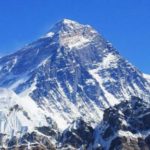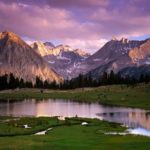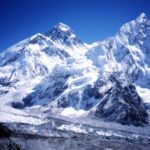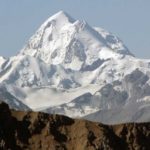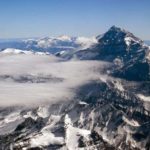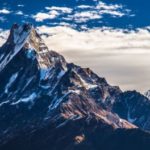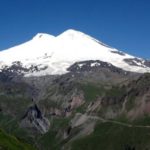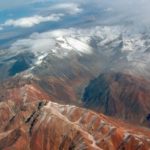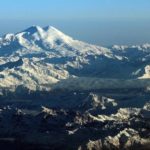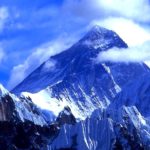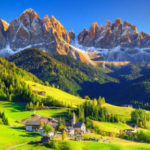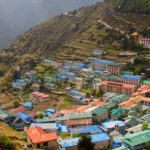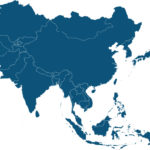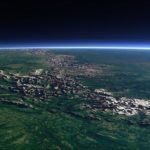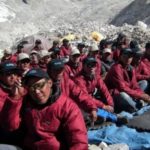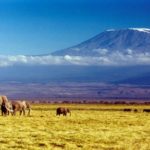Everest
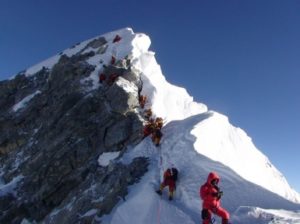 Mount Everest or Chomolungma, the highest peak in the world, belongs to both Nepal and China, although its slopes are different, but the peak is still located in China. Above the Jomolungma, whose height is 8848 meters above sea level and is located in the ridge Mahalangur-Himal, there are no more mountains on Earth. That is why climbing to this peak is the cherished goal of almost all climbers for many decades.
Mount Everest or Chomolungma, the highest peak in the world, belongs to both Nepal and China, although its slopes are different, but the peak is still located in China. Above the Jomolungma, whose height is 8848 meters above sea level and is located in the ridge Mahalangur-Himal, there are no more mountains on Earth. That is why climbing to this peak is the cherished goal of almost all climbers for many decades.
In the southeast of Eurasia, slightly north of the Bay of Bengal and south of the Russian Altai, there is a giant mountain range called the Himalayas.
This massif is the birthplace of the highest mountains on the planet, which, however, in the “political” plan are scattered across the territories of four different countries. These countries are India, Nepal, Bhutan and China, but geographically these mountains belong to one country – Tibet.
Everest is located on the border of Nepal and Tibet in the Himalayas – a mountain system formed by cutting the Indo-Australian platform into the Eurasian plate. The Himalayas, and Everest, along with them, continue to grow by several centimeters a year, this probably explains the fact that different measurements of the height of the peak at different times show completely different values. Everest for Europeans was known as Peak XV, until it received its current name, and this happened in 1865. However, in Tibet, the mountain is still called the Jomolungma, and in Nepal – the Sagarmatha.
The mountain was named after the famous Englishman George Everest, who served in India from 1830 to 1843 and was the head of the geodetic service of this huge British colony. A more or less accurate peak height was measured 14 years before the death of Everest, and a few years later the mountain got its English name with live Everest, although retired.
The local names for Mount Everest are Jomolungma, which in Tibetan means “Goddess Mother of the World” and Sagarmatha in Sanskrit – “Ocean of the Mother”. However, all other peoples adhere to the English name, since local names are difficult to pronounce. On Russian and Soviet maps, however, the Tibetan name of the mountain is indicated – to please the Chinese allies, one must assume. Only occasionally is it supplemented by the generally accepted, but in parentheses.
What is Chomolungma?
Chomolungma is the highest mountain in the ridge Mahalangur-Himal. The peak of Mount Everest consists of three flat sides, and has the shape of a three-sided pyramid, steep in the south, and more gentle in the north. In July, the temperature at the top of the mountain can be around -18 ° C. In January, the temperature drops to -60 ° C.
Despite the cold temperatures, hurricane winds – up to 200 km per hour or more, low oxygen levels, climbers seek to climb Mount Everest. After the first historical ascent of New Zealander Edmund Hillary and a local resident, Sherpa Tenzing Norgay, more than two thousand people successfully climbed Mount Everest, and about a million have already attempted to climb.
Unfortunately, more than 200 people died while trying to climb this peak, however, first of all, the deaths occurred due to a systematic violation of safety precautions. Over the years of the existence of routes to the summit laid both on the Nepalese and Chinese sides, hundreds of thousands of tons of garbage left by tourists have accumulated on the slopes of the mountain. Attempts are being made to clean this garbage, however, according to the most rough estimates, about 500 tons of household waste have accumulated in the mountain area, the bulk of which are metal beer bottles and plastic bags. In a year they manage to collect no more than 10 tons, so it can be understood that with the inevitable increase in the rate of development of tourism and mountaineering in this area, it will soon be necessary to storm not “ice and stone”, but these garbage streams.
The first attempts to conquer the peak of the Jomolungma were made back in the 20s of the XX century, and ascents were made from the Chinese side, more convenient for climbers, but not at all because the Nepalese side excluded the ascent, but because until the end of the 40s Nepal was closed to Europeans. As soon as the country opened for climbers, China, which had become communist, was closed, and Everest had to be stormed from Nepal.
